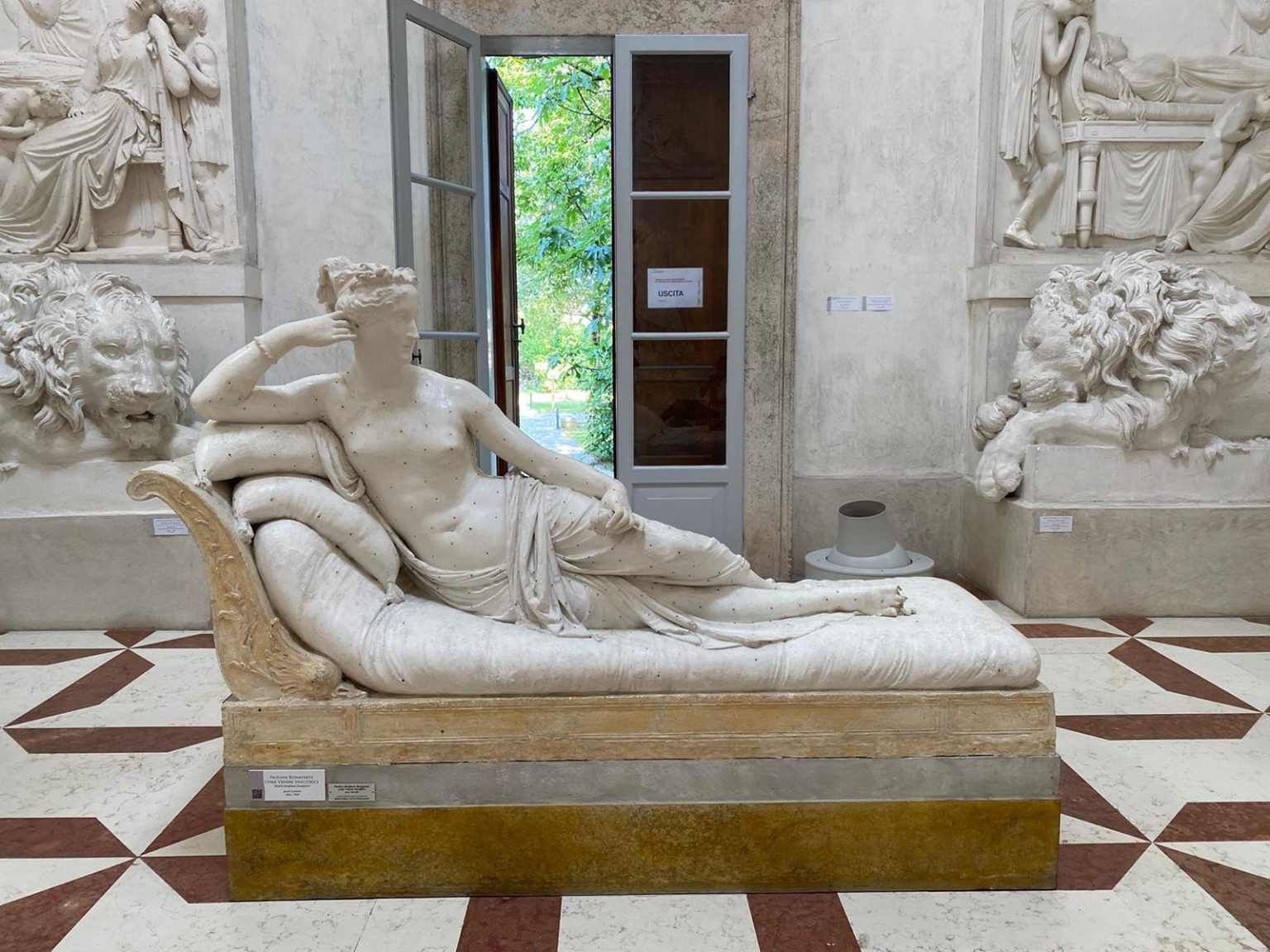
The Austrian tourist responsible for breaking a sculpture by the neoclassical Italian artist Antonio Canova has stepped forward to take responsibility for the accident. The 50-year-old man sat on the historic artwork, Pauline Bonaparte as Venus Victrix, to take a photo, snapping off the statue’s delicate toes in the process.
The man, who lives in the Austrian village of Aistersheim, has offered to pay for the cost of restoring the work, reports Italian news agency ANSA. The provincial court in Treviso is still deciding whether or not to press charges in the case.
The Museo Antonio Canova in Possagno, in northeast Italy, released the surveillance footage showing the man casually reclining on the sculpture as his companion took a photograph. In the CCTV footage, he can be seen looking back at and touching the statue again before walking away.
The broken toes on Antonio Canova’s Pauline Bonaparte as Venus Victrix (1804) after an Austrian visitor posing for a photograph sat on the sculpture’s lap. Photo courtesy of Museo Antonio Canova.
“During the visit I sat on the statue, without however realizing the damage that I obviously caused,” he wrote in a letter shared on the museum’s Facebook page, addressed to Antonio Canova Foundation president Vittorio Sgarbi. “It was irresponsible behavior on my part.”
Sgarbi had called for the police to take legal action against the tourist, and to take him into custody before he could return home to Austria. The man responded by insisting that he had been unaware that he had broken the sculpture.
“I didn’t flee,” he wrote. “I apologize in every way possible.”
The Carabinieri, Italy’s police force, were able to identify the man through the online reservation his wife had made to visit the museum. When the officers reached the man’s wife, she broke into tears and admitted what had happened.
The 1804 sculpture of Napoleon Bonaparte’s sister, Paolina Bonaparte Borghese, was a plaster model for the final marble version of the work, now housed in Rome’s Galleria Borghese. The Canova museum is home to a gypsotheca, or “collection of plasters,” featuring the artist’s work.